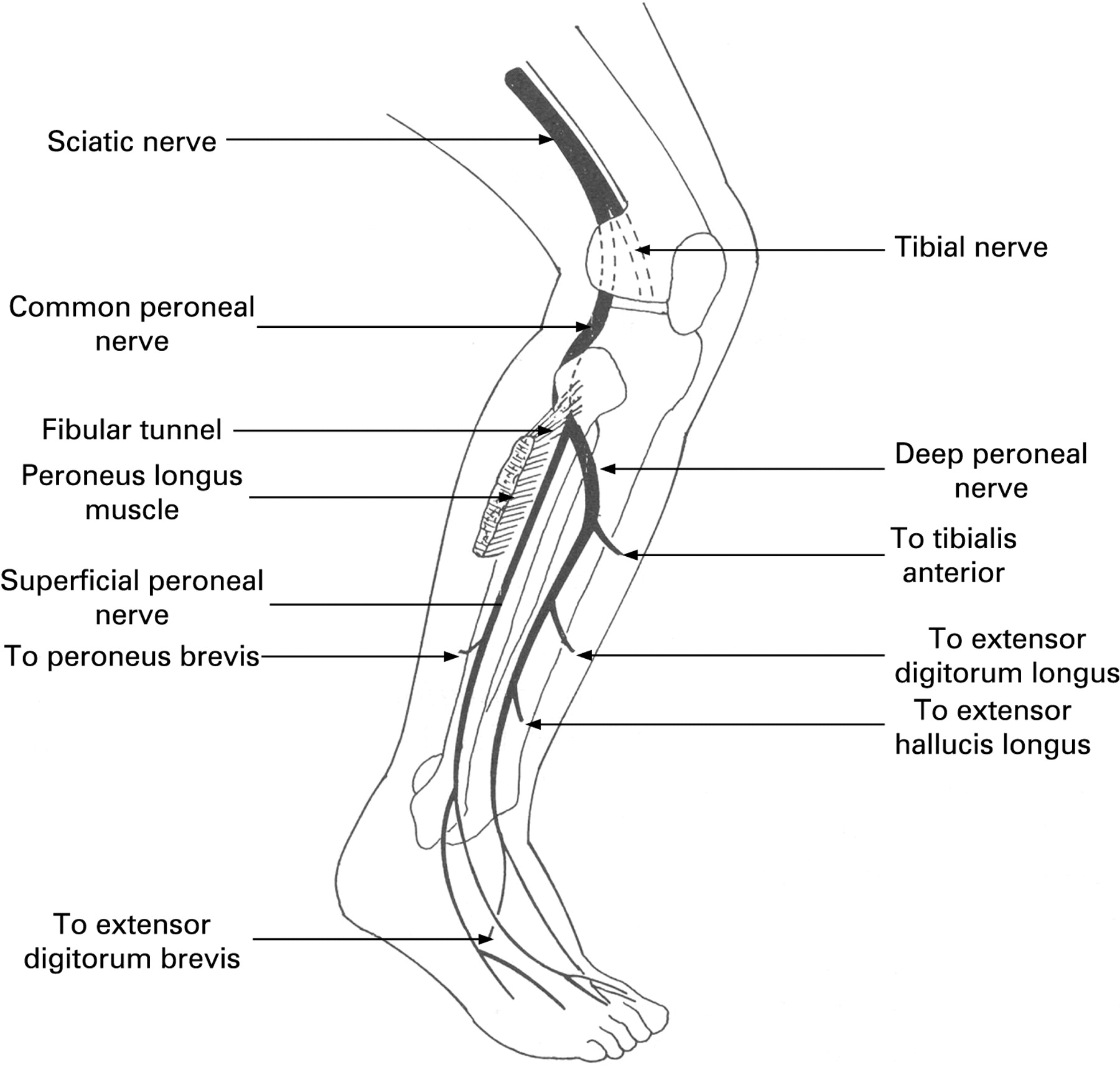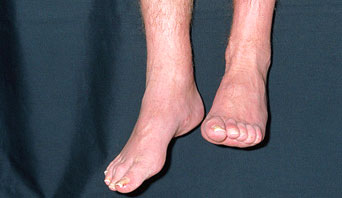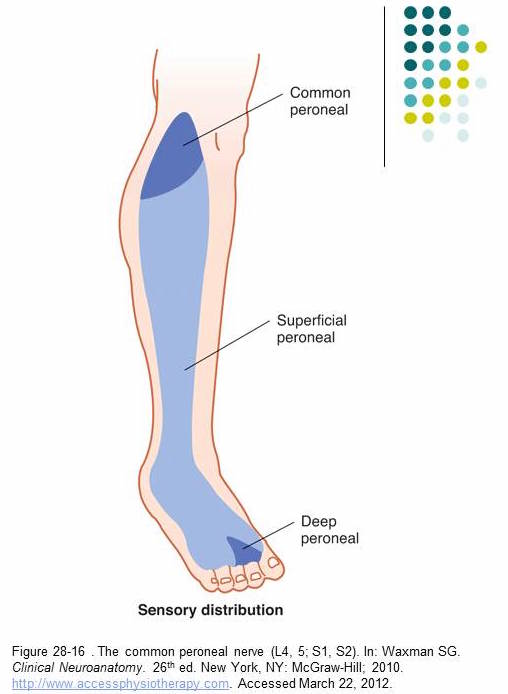NEURAL PATHWAY
The common peroneal nerve (common fibular nerve, external popliteal nerve, lateral popliteal nerve) begins from the spinal roots and originates from the following neural pathway
Dorsal branches of L4,L5,S1,and S2 →1st and 2nd sacral nerves (sacral plexus) → sciatic nerve → common peroneal

*The common peroneal will branch into the deep peroneal nerve and superficial peroneal nerve.
FUNCTION
Motor: the common peroneal nerve innervates the the short head of the biceps femurs. The other motor functions downstream of this nerve are controlled its branches
- deep peroneal nerve (foot dorsiflexion)
- superficial peroneal nerve (foot eversion, and sensation over lateral leg/dorsolateral foot)
Sensory: innervation to the skin on the upper third of the lateral aspect of the leg *via the lateral cutaneous nerve)
CAUSE OF INJURY
Blunt trauma to the lateral aspect of the neck (i.e. fibular neck fractures)
External pressure caused by lengthy immobilization (hospitalization, surgery, and/or casting) can injure this nerve. Even leg crossing has been linked to nerve injury!
CLINICAL PRESNENTATION
Inability to dorsiflex: the characteristic presentation of damage to this nerve is “foot drop” because of paralysis to the tibias anterior muscle (which mediates dorsiflexion). Patients will compensate for this with a “stepping gait” (foot is lifted high off the ground). This gait is associated with the foot slapping down on the ground (with each step) because the patient can not gently lower the forefront of the foot.

Inability to evert foot: is caused by paralysis of the peroneus longus and peroneus brevis muscles
Inability to extend toes: paralysis of extrinsic extensors of the toes
Loss of sensation: Damage to this nerve also causes loss of sensation to the anterolateral leg and dorsum of the foot

OTHER INFO
Most commonly injured leg nerve
Page Updated: 01.20.2016